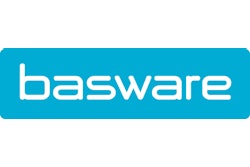
While the supply chain is critical to a company’s success, there is often unintended conflict between organizations and their suppliers when it comes to payment. The most recent economic downturn underscored the premise that cash is king, causing companies to hold onto their cash at all costs. Many became accustomed to the benefits that healthy cash flow offers and were reluctant to loosen their payment policies, even as the economy improved.
Today, many multi-billion dollar companies are extending payments to their suppliers up to 60 to 100 days, and enjoying access to billions of dollars annually that they are using for development, dividends or other purposes. While extended payment policies are beneficial to these companies, they are causing cash-flow problems for their suppliers, potentially jeopardizing their financial health, particularly for smaller ones. At the same time, the extended payment practice puts pressure on the buyer-supplier relationship.
Inefficient Invoicing Processes Slows Supplier Payments
Another factor resulting in delayed payments are inefficient invoicing processes—both for sending and processing invoices—a problem that is prevalent not only in the U.S., but also abroad. Only 15 percent of companies send out the majority of their invoices electronically, according to The Global E-Invoicing Study Basware conducted with the Institute of Financial Operations in 2012. Since a paper invoice sent through the mail typically takes about 14 days to be received and entered into the buying organization’s system, expediting the sending and receipt of invoices is critical.
Manual processing methods further slow the process. Once received, the invoices must be scanned or input at the organization before they can be processed. Without an automated system in place, an invoice can be buried on someone’s desk without anyone ever knowing about it. There is also little visibility into the invoices and much room for inaccuracies.
e-Invoicing, Invoice Automation: Solving the First Step of the Payment Problem
Companies are turning to e-invoicing to send invoices and related documentation instantaneously rather than the weeks it takes using manual methods. With services that provide scan and capture, virtual printing, supplier portals and onboarding, it is easy and cost-effective for companies of all sizes to send and receive e-invoices. In addition to the benefits e-invoicing provides to buying organizations—enabling them to streamline processes, and have greater visibility, control and cost savings—it also benefits suppliers by allowing them to track the status of their invoices and benefit from faster processing, which can lead to quicker payment.
Business commerce networks are rapidly becoming the platform of choice for sending and receiving e-invoices as well as e-orders. Companies of all sizes around the world are using business commerce networks to transmit these transactions instantaneously, expediting both purchasing and accounts payable operations. By reducing the invoice transmission time from weeks to a matter of minutes, companies sending e-invoices over business commerce networks are solving the first part of the payment problem.
The next step in expediting payments is invoice automation. Advanced invoice processing technology enables companies to streamline and speed the invoicing process by automating all of the steps in the workflow from invoice receipt through to payment, including invoice review, and approval and submission for payment. In addition, invoice automation provides visibility across all invoices and critical control to avoid late fees. It also enables companies to take advantage of early payment discounts, and effectively manage spend, working capital and cash flow. Lost or missing invoices become a thing of the past, and companies are able to reduce costs and help prevent fraud.
e-Invoicing and e-Payments: A Marriage Made in AP Heaven
While e-invoicing speeds processing, the timing of payments is still dependent on buyers who have incentives for holding onto their cash longer. New solutions that combine e-invoicing with e-payment are changing this dynamic and allowing suppliers to benefit from faster payments. These solutions, which combine the services of a financial institution and an e-invoicing services provider, ensure that suppliers are paid upon invoice approval, while extending payment terms for buyers. It’s a win-win situation, boosting the cash flow of both parties and avoiding payment issues, which can put undue pressure on suppliers and negatively impact the buyer/supplier relationship.
The combination of e-invoicing, invoice automation and new e-payment solutions helps solve extended payments and supplier cash flow issues. It not only gives suppliers quick access to payments, but it also provides buyers and suppliers with the cash flow needed to make their businesses operate smoothly. With cash flowing more freely across the supply chain, buyers and suppliers can focus on what matters most: building their businesses and furthering their relationship in mutually beneficial ways.









